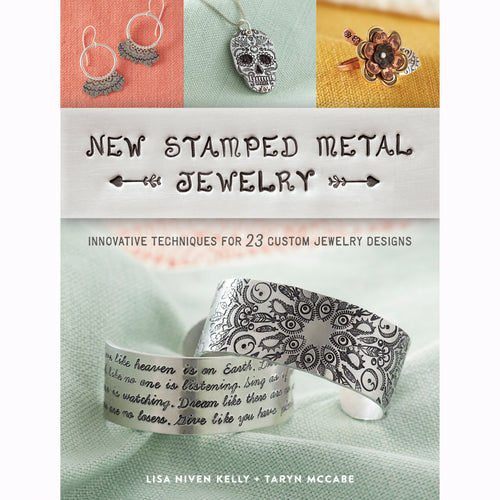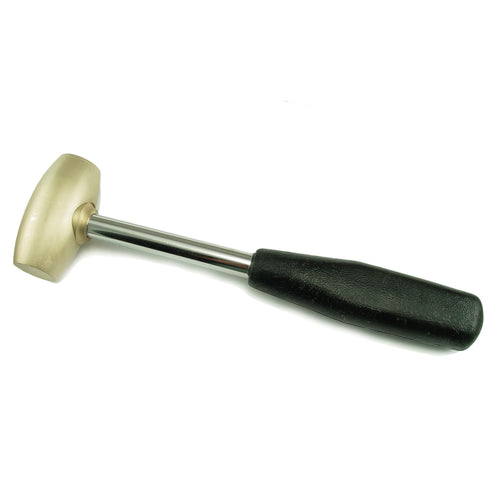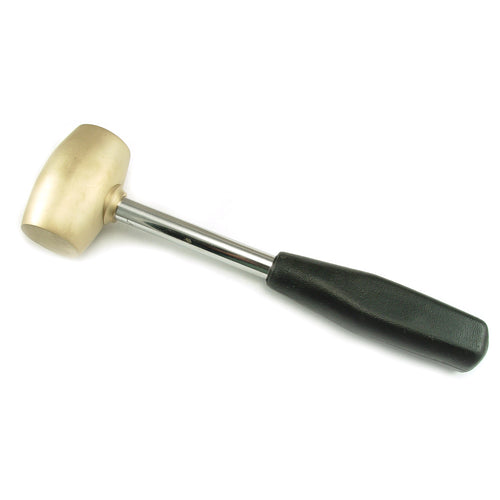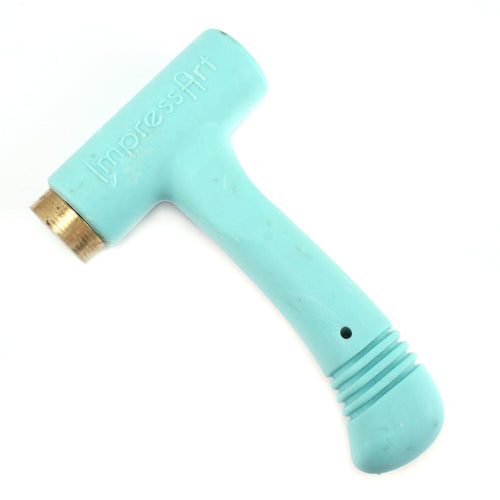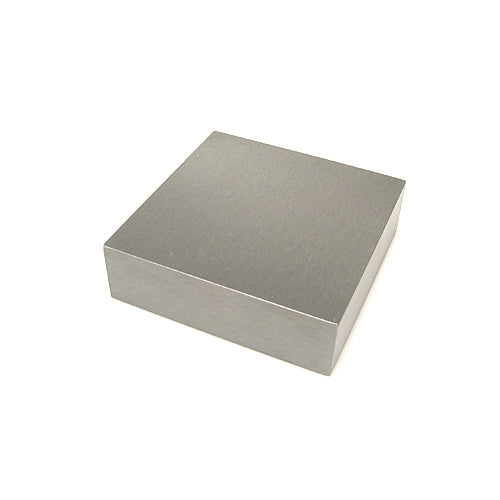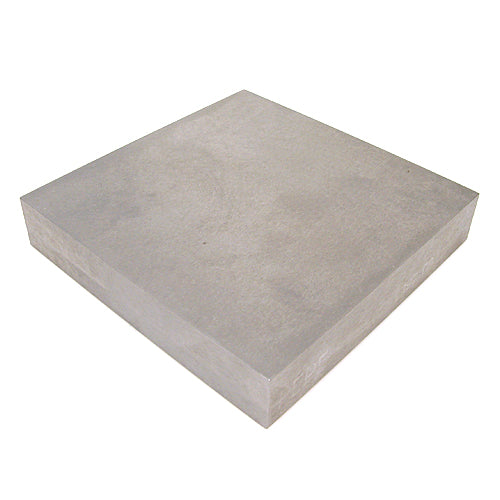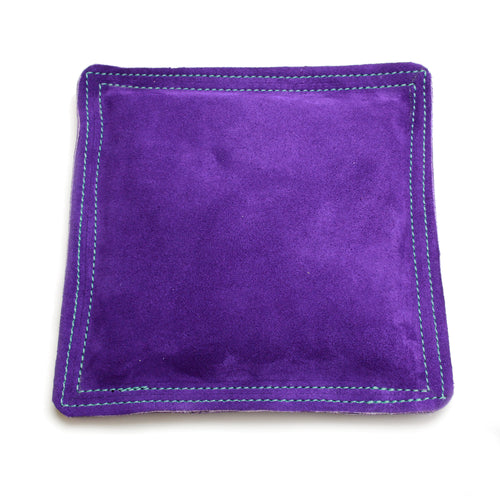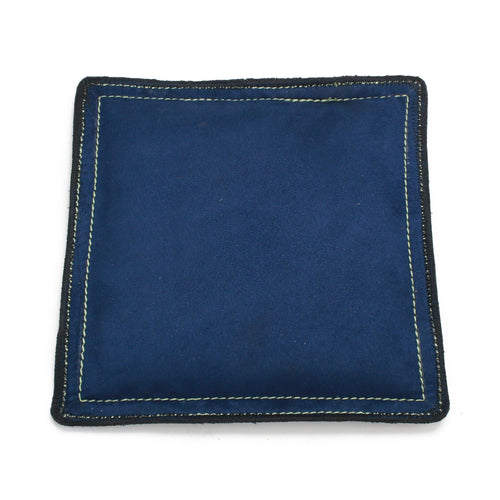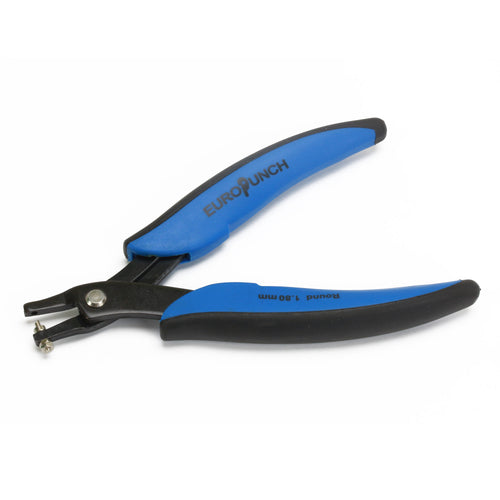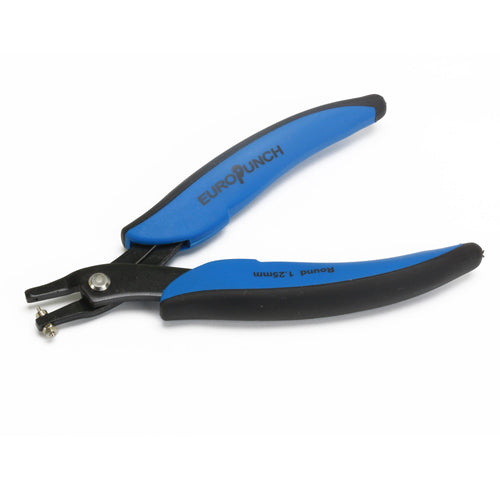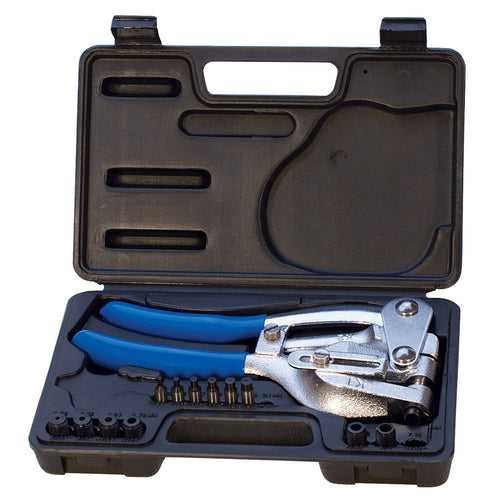Stamping on Metal
hi I'm Lisa Niven Kelly founder of Beaducation.com and you are here to learn
how to make some stamped metal jewelry we're all set to teach you that so I've been teaching stamping since about 2002
and I've written a book and I've taught classes and I'm really excited to share a bunch of tips and tricks with you
[Music] let's get started talking about these
tools here a couple things you need for stamping just the basic set up I'm going
to show you what it is here and then we're gonna go into depth hammer hole
punch pliers bench block some letter
sets and some design stamps there's all kinds of other fancy stuff other than
that but let's talk about these basics first so you can get started let's talk
first about letter sets just like anything else you're gonna find letter sets in different quality in different
prices so the cheaper stuff might be made over in China or India and then
there's some nice sets made here in the United States the stuff in the United States is going to be a nice high
quality hardened tool steel and that's gonna make your stamps last they also
oftentimes will come in a nice box like this where each letter has its own little slot which comes in really handy
when you're kicking into production work so if you're working with a set like this and you pull out the are all the
other letters are going to bunch together you're gonna have a hard time finding your letters it seems a little silly but it's really helpful so the
United States high-quality sets also tend to have a little indicator on the
stamp it might be a little notch or it might be the actual letter and that's
where you're going to put your thumb when you're stamping and it helps you orient your stamp so that your letter
faces the right way that's also very helpful so a lot of little bells and whistles on the higher end stuff but to
be honest the cheaper sets are a great set to get started on too just be aware that they come coated in grease so
you'll see the stinky grease all over it that's a good thing because it kept them from rusting when
being shipped from overseas so just grab a paper towel take out each letter and
wipe it off you can leave a little bit of grease on there but don't try to wash it off with soap and water
here's some more tools you're going to need let's talk about design stamps so just like the letter stamps these are
going to be made in various countries and various designs out there since stamping is picked up you'll find a lot
more designs on the market and there's some really fun ones but design stamps can be pretty tricky so when I get into
the demo portion of this class I'm going to show you some tips and tricks okay design stamps and I've got these sitting
just in the top of one of my letter sets holding them up or you can get little
design stamp trays we offer a couple of those benchmark you need a nice pristine
clean bench block with very hardened tool steel remember don't let this roll
around in your bag with the rest of your hammers and such because it'll Knick it up in any of those indentations in the
block will show up in the back of your jewelry when you go to hammer on it so let's take good care of your bench block
you're going to also need a way to pop a hole in your blank if you are going to be adding a jump ring and hanging it as
a pendant so of course if you've got a flex shaft tool you can drill a hole or
sometimes I just use my dremel tool to drill a hole there's other hand tools available as well screw down hole punch
works well and my favorite for a thin blank is the hole punch pliers it's
pretty simple I'm going to show you how to use that when we get to the demo portion as well alright so now you need
a hammer to strike your stamps with make sure that your hammer is at least one pound in weight which is 16 ounces so
you're going to need that weight behind the blow to get a deep impression those light hammers like them girly hammers
with the flower handles or the pink handles mm-hmm we need a heavy hammer than that so for years I just used a
basic old nail pounding hammer just a household hammer here and it worked just
fine and so that is an option just cheap from your local hardware store or what I
use now pretty much exclusively is a brass mallet and what's nice about this guy is
the brass it's a pound as well it also comes in two-pound we'll get to that but the brass is a very dense dense metal so
when you stamp it sits and it hits it like a dead blow hammer you don't get any bounce back which can kind of cause
a little double impression with your stamp one thing to note about the brass head mallet is it is a soft metal even
though it's dense so the head of the hammer will get all dinged up and that's totally fine it's actually nice because
if you were to hit your stamp a little bit off the head of the stamp sinks into
the hammer and it distributes the blow better rather than the hammer just bouncing right off so I really like the
brass head mallets don't use your chasing hammer for stamping although traditionally this
tool is used for striking other tools it will ding it up and it's not heavy
enough so I tend to use my chasing hammer for forging wirework and so forth and I want to keep it nice and clean but
the main thing is it's not heavy enough and since we're talking about hammers I do use a plastic mallet to flatten out
my metal if it distorts it all while I'm stamping it we'll talk about that in a little bit last but not least we need a
way to get the dark into the impressions so you get to see that contrast there's a bunch of different ways you can do
that you can use these solutions liver of sulfur or silver black which actually react with the metal to cause the dark
then buff it away from there we'll get into that or you can do the cheap and dirty way like I do often using a
sharpie pen or a permanent pen what's nice about this is it comes in colors so you can also add colors down into the
impression we'll talk a little bit about that but with these two liver of sulfur and silver black I'm going to refer you
to their product pages on beech occation comm so we have a lot of information and some little product videos there so you
can learn about them whichever way you choose to add the dark you're going to need to buff it off of the surface of your metal so you can use steel wool and
you want to find the finest steel wool that you can get you don't want to texture up your metal too much followed
by a polish cloth or pro polish pads do the job of both of those in one step
and this has a little micro abrasive in it as well as the polish compound so it'll buff it off really nicely all
right so to summarize what you need to get started is a hammer a bench block a
letter set some design stamps a hole punch a way to add black a way to polish
it off and let's get started stamping as you can see we have a large variety of
metals as well as shapes what you're looking at here is a bunch of pre-stamped blanks and some cast pieces
the metals you see are brass copper this
is gold fill some nickel silver some sterling and silver filled and some
anodized aluminum these are the metals that we tend to stick with when making stamped metal jewelry but you can stay
upon any metal as long as it's not too hard where it will damage your stamps for practice I tend to stick with copper
because it's nice and cheap out of all the blanks that we sell still the plain
circle is by far the most popular and we carry a large variety in all these metals for thickness we tend to stick
with 24 gauge or thicker [Music]
okay here comes the fun part we're ready to start stamping I'm gonna work first
with a piece of 24 gauge copper sheet to practice on got my bench block I've got
my hammer and I've just grabbed any old letter here to practice a couple other
things to point out notice my bench block has no padding under it it's just flat on my table if I have any padding
under the bench block I'm gonna get a little bounce and a shadow look and that's not what I'm going for so flat on
your table before lining up and all that practicing design and so forth I just
want to talk about how to hold the stamp and how to hold the hammer so when you hold your stamp make sure you're holding
it straight up you don't want it tilted to any direction and don't hold it too high because then it's too hard to
stabilize I kind of put my pinkie down here and hold it sort of low and I press
slightly into the metal but I'm not pushing really hard also don't give it the death grip here
with your stabilizing hand because your hand will get real tired real soon now over here on the hammer I don't hold way
back on the handle because it's a little harder to control I'm going to let the
weight of the head do most of the work and I'm going to hold it Midway right about here when striking you want to
come right on top try not to come in and go like this or like this or like this
or you might not get a really good impression so let's give it a go I give
it one strike that looks pretty good we're gonna zoom in in a bit
if you feel like you don't have a lot of strength in your arm and you want to give it to wax that's fine and let me
show you too light and too heavy and then we'll zoom in and take a look to
light you won't be able to see the ink or the oxidation once you get it into
your impression and too heavy you might pick up an edge so let's zoom in here
you might pick up an edge of your letter and it won't look real good so those
first three Z's that I did on the top look great the next one you can see is a little light and the next one I got a
little crazy I want to point out that tiny little line to the right at the bottom of the Z that's what happens when
you stamp too hard you catch the edge of your stamp so grab a letter don't worry
about spelling yet just get used to how to hold the stamp and how to hold the hammer and practice practice that for a
little bit now that you practice how to
hold the stamp and how to hit the stamp let's practice lining the letters up left to right and top to bottom as well
one thing we need to talk about before we move on though I want you to take a look at some of these stamps so here's a
Z that we were using this was the uppercase kismet it's a beach ocation original set and this is a Z from the
economy uppercase set this is an a from a USA made uppercase set I want to point
out on these two stamps you see how you can't really count on the stamp excuse
me the letter being centered on the stamp look at this a it's way over on
the side and the Z is way down at the bottom so we're going to have to accommodate for that when we stamp
because ideally I know what you're thinking you want to just draw a line and line up your stamp and hit it that's
not always going to make sure that you have a centered letter I will say on the beach occasionally it will
yes I'm bragging about our stamps there you really awesome you can line up your stamp to a line and get a straight line
I want to talk a little bit about that later for now I more want to help you problem solve for the stamps that don't
have a perfectly centered letter so let's start by drawing a line this is
one of a few techniques you can use I'm gonna draw a line just right here with
sharpie and a straight edge and I'm gonna zoom in a little bit for this
because what I want to show you is again because the a is way off center if I
just lined up my stamp and hit it then I'm not going to be able to make sure that everything else is lined up so what
I do is I look for the reflection of my letter I'm not sure if you can see it on
camera but I lay down my stamp peek
underneath it see if the a is where I want it to be left to right tip it up
and stamp it you can also tilt it to the side and peek under this way or the
other way if you're left-handed what I notice though that I need to do first is polish up my metal a little bit so see
how you can kind of see the a there look what happens after I pull I don't want to remove my line but I can have a
nicer reflection here there now you can really see it do you see it there so lay
it down and stamp
so these are coming out okay so you can
work with the top-to-bottom spacing this way or if I was spelling backwards
I would lay the stamp to the left here look for the reflection of exactly where I want it to be and set it up now again
with practicing like this just grab one letter oops I slid off but it came okay
just grab one letter so you're not spending a bunch of time right now working on spelling out a word looks
more practice or more concentrate on getting everything lined up so that's
not too bad and remember they're not gonna come out perfect come on now you can't make it perfect you don't want it
to look like it's a machine but I'm gonna teach you ways to get it glows all
right one more trick is we're gonna use some painters tape now this has a couple
different added benefits some people use this to actually tape their piece down to the bench block if we're using
something smaller but I'm gonna use it as an edge you can use a couple of
pieces of painter tape if you want a little more thickness to it but we can do what this is lay down your stamp and
scoot it down lightly till you feel the edge of the protruding letter touch the
tape and then stamp see how the bottom of that a is right there with the tape
it's not a big deal if you actually stamped in a little of the tape because it'll pull out that's a great way to get
them lined up in a straight line that's not going to help you get them lined up
perfectly left to right but you will get a pretty straight line
one thing to note about this it works for almost all the stamps but if you're using a lowercase stamp let's
say it's one that hangs low like a J or a G you're going to have to accommodate for that and let it overlap a little bit
I want to demonstrate what I was talking about with our original stamp sets and
here's a set here this is the uppercase kismet they each other on home they each have a
letter on the stamp and they're coated in nickel to avoid rusting so let me
show you how to line these guys up it's really a thing of beauty you can
actually line up the edge of the stamp with a line right there and because
these are so precision made each letter is perfectly centered on your stamp so
that they line up nice and straight look at that oh my gosh I just want to show you one little trick with the lowercase
ok this tip I'm going to show you actually applies to both the lower case and the upper case and I showed you how
to get a straight line but to line them up left to right what I do is take this
stamp you can again use the reflection technique or I take the stamp and sort
of cover about halfway of the previous letter if I'm stamping off to the right
so I've covered halfway of the Z in front of it and that gives me great
spacing that works well for the uppercase and the lowercase let me grab
a little lowercase M here the only
letter it doesn't work well for is a thin letter like an L or lowercase I
so you'll notice here that because my letters the lowercase are smaller they're shifted up higher a little bit
so you have to remember there's a little space between the letter and the edge of the stamp you see if I can bring this up
for you this space here you have to remember that space is going to pop in
there so if I was stamping a lot a full word here I might want to shift my lowercase down a little bit let me show
you a couple of things on this lowercase stamps of our originals because I don't
want you to be confused when you look at them now you see this K here it doesn't
look centered on the stamp it's shifted way high on the stamp and that's so that
the bulk of the K is centered so don't be confused when you see that don't think that they aren't perfectly
centered they're centered so that the bulk of the K and the top of the J will line up with each other
give it a try you'll see what I mean now
we need to talk about design stamps they're a little trickier than working with the letter sets and they need a
little more attention so we've got two options here sometimes if it's a simple
design I might work with my one pound hammer if it has a little more detail it's gonna be a little harder to stamp
so I might bump it up to the two pound let's show you how that works now remember with design stamps the more
detail to the stamp the more hard it is to impress because you're not removing
the metal you're moving it and all that movement of the metal needs to happen at the same time and smoothly so I'm going
to use this star stamp it's pretty straightforward it's not too hard and I'm just gonna practice here and that
turned out pretty good let me show you there it's got the story let me grab a
more detailed stamp like this large
heart spiral so the more detail to a stamp or the bigger in size the harder
it might be stamp let me try just one wack now that
came out okay but as you can see if you compare it to like these Z's over here it's really light so I would have
preferred it was a little bit deeper I did a good job at getting the entire stamp to impress but I wanted to impress
a little deeper so let's try two strikes a little bit better let's try the big
old hammer that's a little better too
now something interesting to point out on this one it's deeper on the left then on the right you may not be able to see it on
camera but trust me it is so that leads me to my next technique which we call
the Tilton tap this is a way of stamping that we do to make sure that all sides
of the design impress so what I'm going to do is hit it more than once and I'm
going to slightly tilt my stamp each time I hit it and I'm over-exaggerating here so you can see it on camera but
really I'm gonna do it just tiny bits and then strike each time sort of think
of it maybe as tilting north east south west that was pretty good so let me
demonstrate that with a more detailed stamp here's the castle stamp and it has
a lot of detail to it so let's problem-solve this guy it's pretty big
it's like a nine millimeter stamp let's try first with one strike with the one pound hammer that came out pretty good I
did get all the parts of it but it's a little light so let me come in with the
two pound that's better
now how about one more let me grab a really difficult one I'm gonna grab this
tiara because I'm actually gonna use it my finished pendant that we're gonna make in a minute and this guy's hard to get to impress
all the parts that was basically
horrible I hardly even got the right side of it look at that you saw my hammer kind of slip hands are
a little suede so what I need to do and this is why I always practice a design stamp and copper before moving on even
if I feel like I'm the best Stamper in the world so I need to press down a little harder to make sure everything is
sitting right and again I only caught the right side so this tells me that I
kind of tilt to the right without realizing it so I'm going to try to overcompensate and tilt it a little bit
to the left that was a little better so this is a
great example of why I would use the tilt and top method with the stamp with
this much detail so let's give that a try and there we go much better
so the project I'm about to demo for you is going to be just a plain simple pendant with the word Annabelle on it
I'm making it for my friend that's her daughter's name so it's trying to decide which blank to use so here's a great tip
for design you can take your blank and actually trace it onto a thick piece of paper like cardstock and I've traced it
with a sharp pencil here and we're gonna zoom in here so I can show you that you can actually get in there with your
letters stamp very lightly and impress it into the paper here to make sure that
it fits and to sort of set up your design now I just laid my paper on my table or actually put a magazine under
it you don't want to do that on your bench block but what you can see here is
that I really like this design I think it's neat everything lined up the letters lined up well this is another
interesting one I've got a little design stamp down there but you can't really see that I'm gonna go for the circle
though I'm gonna do a basic one and what I learned here when I stamped it is that I need to start with my a way over to
the left because I sort of ran out of room you see that there but this is a great way to sort of plan out your
design and play with it a bit I decided to go with the circle and I traced it a
couple times here and then got out with my pencil and just started doodling different designs this is my favorite of
the three but in order to teach you how to get a straight line and get your bird centered I'm gonna go with this one
alright I'm almost ready to stamp but there you know you'll want to prep it get it all ready so it's close to
perfect so what I've done here is I've got my blank it's a sterling silver 24 gauge 7/8 inch
circle and I've taped it down to the bench block I'm also using the top of
the tape as my reference line so it's a dual-purpose piece of tape there I'm
going to use my ruler to help find the center and once I find the center of
this blank I'm going to be stamping one direction and then the other so that's
the way to get your word centered on your blind you want to find the middle of your blank find the middle of your word and
then stamp one direction and the other so what I do here is I like to write out
the word so that I am spelling properly when I'm spelling backwards I have goofed that up many times so I've got it
written there for that and I've also put a number above each letter so I know where the center is and it looks like
the center is right here between the B and the E so let's find the center of
our blank again this is 7/8 inch so it's
kind of hard to mark the center using a ruler when you're working with such specific sizing that's a lot of little
lines and I'm going a little cross-eyed so what I'm going to do is just Center the blank between the 0 and the 1 inch
mark and then I can mark my Center right there at the 1/2 inch I hope that made sense it's a little bit of cheating
truth be told though I just faked it so how about that that looks like the
middle and then while I'm here I'm going to take a moment to put a dot where I
want my jump ring I've got here the
lowercase e and I'm going to start with the e ll e just to the right of my dot so this is one of the education original
sets so I can line up the bottom of my stamp there but if you need to do this
little peeking trick go for it just to the side of the dot now my L still
lowercase
another L came out a little high there but I'm not going to fret it got the e
ll e let's move the other direction with the B the a
the N spelling backwards is tricky and
last but not least my uppercase a now remember when we did that demo I'm gonna
put this a little bit lower when we were practicing our upper case and our lower case you see that if I line this up it's
going to put my upper case a super low I want it to line up with my lower case so
I'm gonna lay it a little bit higher so the bottom of the letters might not okay
I'm really happy with the Annabel stamped out there and now I'm gonna do the tiara stamp underneath it when I
practiced it over here in our last demo I didn't do so well with it so I'm not confident that I can just go straight
into the Sterling so as always if you're not super confident with the design stamp I'm gonna just let that hold on
and practice it one more time over here remember with stamping there's no
backspace and there's no whiteout so if you're goofing in your sterling it's gonna be really hard for actually
impossible to fix it goes in the recycling bin so I'm gonna try both the methods that I taught you the tilting
tap or just one really strong strike with the 2-pound and see which is working better for me on this particular
day let's tilt and tap first hmm it
looks like I let my hand wander a little bit that's something you need to remember when you're pressing and
tilting don't let it shift at all let me give that one more try better but I seem
to be famous for catching the right side
I'm gonna try the two pal that works really well for me I'm gonna consciously tilt it to the left and just give it one
strike that's better I'm going to use a
two pound hammer for this let's pull on the Sterling and wish me luck I don't mean to scare
you with the design stamps I just purposely chose a really hard one to help teach you how to problem-solve so I
want it slightly tilted right in the middle here and I want to brace it really well and I'm coming in with my
two-pound got it I was worried that I
gave you the fear of the design stamps when in fact most of the ones that we have are a simple simple design like
this tiny heart here so I want to show you how easy these are I'm gonna take this guy and just place it right here
I'm confident I can get it with one whack I don't need to practice it just gonna hit it once with the one pound and
they're a simple part right at the top so see it's not so scary that looks nice
next we're going to punch our hole and then put black down in the grooves and polish it up as I mentioned before
there's a lot of options for punching the hole I've chosen the 1.8 hole punch pyre
and what you see here is a little piece of thick paper it's ripped off of a business card sometimes it's pyar Mars
my metal when I squeeze it shut so this piece of paper acts as a little bit of cushion so I am going to line it up with
the dot and just hold it first before punching I just want to look at all the
angles to make sure that's exactly where I want it I'm pretty happy with that so with a squeeze and then a little wiggle
to get it off I've got my whole my next step is to put black in the grooves with
whichever method you choose I'm going to use a sharpie and just really push the
tip of the pen down in the grooves
make sure that it gets on in there
I think the sharpies doing but we will squeeze the last bit out of it that we can
yeah let's take a look you need to make
sure that we have it down in the grooves of all the letters the top of my first L there is empty let's get it in there
there we go now I'm gonna take a pro polish pad
without micro braces and I'm just gonna buff buff buff over the top it's gonna take it off of the top of the pen in
here but leave it in the recessed areas
coming along no need to be very gentle with this guy just keep it on the
surface and buff back and forth
so look in that kind of makes a mess on
your hands but that's okay we're working with our hands here there's my Annabelle pendant already for
a jump ring and a chain I've chosen an oval jump ring to hang from this pendant
I like the little jump rings because the gap sits up on the side and the pendant sits down at the bottom it's you're less
likely for that opening to open up and lose your pendant so now with my
freshly-cleaned hands I am going to open this jump ring you can find a little
video on opening and closing jump rings on our website insert my pendant and
close that guy nice and tight and look
it's done yeah I'm really really happy with that now that you've seen the whole
process all the way through I want to throw in some tips and tricks for you first of all I mentioned having nothing
underneath your bench block when stamping that is true but there is one exception if you want to have a sandbag
or a pounding bag underneath it it's usually a thick leather filled with sand or steel shot that's fine it adds really
really nice resistance and it also helps out with sound it's not necessary but I just want to throw that out there along
those lines to make sure the table that you're working on is very stable if you're working on a wobbly table it's
going to cause the stamp to kind of jump and get that double impression look so make sure that your tables very strong
one question we get a lot from customer service is well we get people calling in
saying it's not working hope it's helped me through so we problem-solve with them and what happens is sometimes people
forget their bench block altogether you got to have the bench block you need that hard resistance underneath the
metal that you're stamping on so let's see what else here oh we get questions
on can I stamp on back of my pendant you can but you need to have a much thicker metal it's not
going to work on 24 gauge you'll notice that when you stamp on the top it impresses it punches through a little
bit on the back the indentation of the letter so if you bump it up to a thicker metal you will be able to stamp on both
sides maybe like 18 gauge or thicker also some people prefer to stand up when
they're stamping maybe work on a little bit of a higher table they feel like they have more control that's fine too
if you want to give your pendant a little bit of a domed look you can use a
tapping block and a plastic mallet I want to have the letters facing down and
I place it in my block so that it domes out it's going to give it a nice slight curvature not too drastic couple strikes
with my plastic mallet kind of moving over to make sure I'm getting the whole
thing to shape
and I want to remind you I know I sound like a broken record but make sure you practice your design stamps each time
before you use them now if you're stamping away with letters or sometimes
design stamps and you only catch one side of it you can go in and realign up
your stamp and try to do it again but it's a little tricky so if you miss
stamp and you only catch one side like I've done here you can kind of go in and
line it up maybe close your eyes feel the stamp fall back into the groove and give it another whack you may notice
sometimes as you start to stamp that the metal begins to distort a little bit you
can kind of see on these ones that I have on my bench block that they are a little bit not so straight shall we say
as you stamp the more stamps you put on the more it moves the metal right so
oftentimes it's moving it to the outside and the edges start to curl up just like this one's a really good example so to
flatten your metal back out you're gonna want to use your trusty plastic mallet so let me show you what this guy here
one thing you want to make sure before you do this is that you're working on part of your bench block that is smooth
and doesn't have a bunch of nicks in it like I've got a little bit of a mess up here so I'm going to stay away from that because as we come in with the hammer
and flatten it could transfer those nicks to the back your metal so to flatten
this guy out we can do it face up or face down again if you're going face down that bench block better be nice and
pristine let's do it face down for this one and I'm just going to come in and hit it a couple times with my plastic
mallet there we go nice and flat let's do
another one I've got this strip here and as I did a lot of stars out towards the top it
started to bend it so let's do this one face up and see if we can get that
that's a little bit better we can flip it over as well making sure you're on a nice part of your bench block and there
we go that's a lot more flat let's do one more this guy here nice and flat so there you
have it I've shown you a lot of stuff you need to know to get started making stamped metal jewelry ah what's that oh
it's a book called stamped metal jewelry oh look there's another one they're
everywhere I'm sorry I'm being a goofball but this is a book that I wrote about a year ago there's a lot of great
information in here like there's a DVD in the back with basically all the stuff I just showed
you now plus a little bonus project and throughout the book there's a lot of different designs we bring in a lot of
metal smithing techniques to mix with your stamping and all that you've learned today so check it out if you
want to if you buy it from be education com I'll even sign it for you so cool thanks so much for coming by today and I
hope you make some beautiful jewelry [Music]





